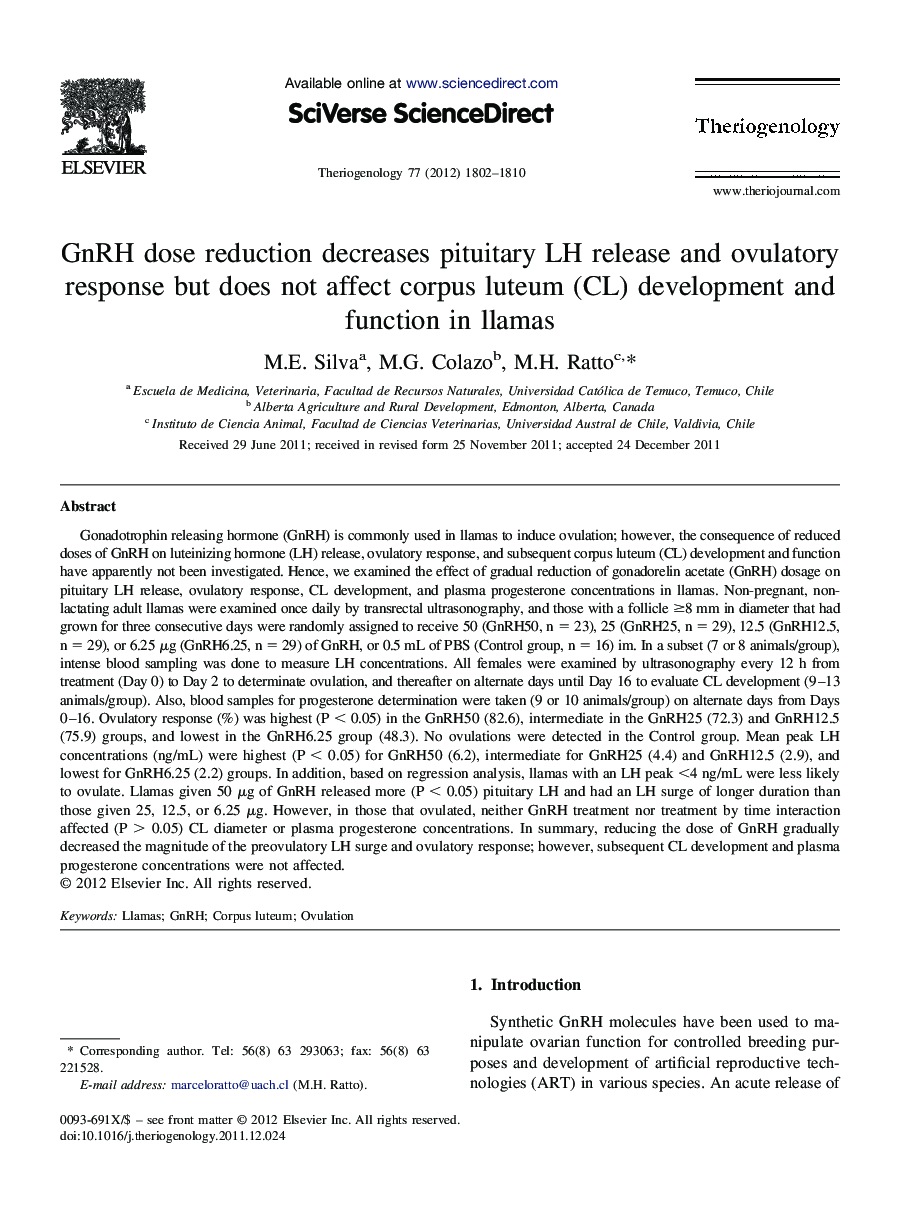| Article ID | Journal | Published Year | Pages | File Type |
|---|---|---|---|---|
| 10892837 | Theriogenology | 2012 | 9 Pages |
Abstract
Gonadotrophin releasing hormone (GnRH) is commonly used in llamas to induce ovulation; however, the consequence of reduced doses of GnRH on luteinizing hormone (LH) release, ovulatory response, and subsequent corpus luteum (CL) development and function have apparently not been investigated. Hence, we examined the effect of gradual reduction of gonadorelin acetate (GnRH) dosage on pituitary LH release, ovulatory response, CL development, and plasma progesterone concentrations in llamas. Non-pregnant, non-lactating adult llamas were examined once daily by transrectal ultrasonography, and those with a follicle â¥8 mm in diameter that had grown for three consecutive days were randomly assigned to receive 50 (GnRH50, n = 23), 25 (GnRH25, n = 29), 12.5 (GnRH12.5, n = 29), or 6.25 μg (GnRH6.25, n = 29) of GnRH, or 0.5 mL of PBS (Control group, n = 16) im. In a subset (7 or 8 animals/group), intense blood sampling was done to measure LH concentrations. All females were examined by ultrasonography every 12 h from treatment (Day 0) to Day 2 to determinate ovulation, and thereafter on alternate days until Day 16 to evaluate CL development (9-13 animals/group). Also, blood samples for progesterone determination were taken (9 or 10 animals/group) on alternate days from Days 0-16. Ovulatory response (%) was highest (P < 0.05) in the GnRH50 (82.6), intermediate in the GnRH25 (72.3) and GnRH12.5 (75.9) groups, and lowest in the GnRH6.25 group (48.3). No ovulations were detected in the Control group. Mean peak LH concentrations (ng/mL) were highest (P < 0.05) for GnRH50 (6.2), intermediate for GnRH25 (4.4) and GnRH12.5 (2.9), and lowest for GnRH6.25 (2.2) groups. In addition, based on regression analysis, llamas with an LH peak <4 ng/mL were less likely to ovulate. Llamas given 50 μg of GnRH released more (P < 0.05) pituitary LH and had an LH surge of longer duration than those given 25, 12.5, or 6.25 μg. However, in those that ovulated, neither GnRH treatment nor treatment by time interaction affected (P > 0.05) CL diameter or plasma progesterone concentrations. In summary, reducing the dose of GnRH gradually decreased the magnitude of the preovulatory LH surge and ovulatory response; however, subsequent CL development and plasma progesterone concentrations were not affected.
Keywords
Related Topics
Life Sciences
Agricultural and Biological Sciences
Animal Science and Zoology
Authors
M.E. Silva, M.G. Colazo, M.H. Ratto,
